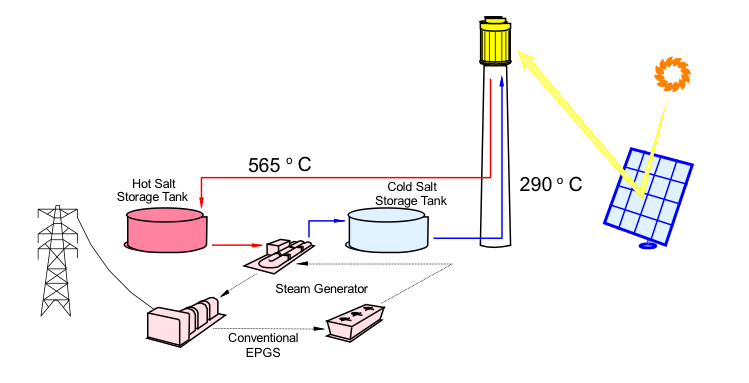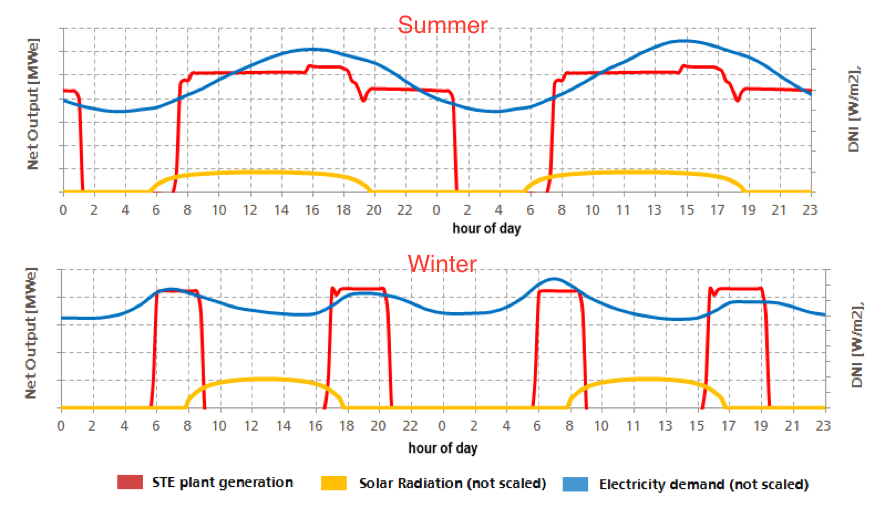There are two major tends driving the U.S. power sector.
First, a large number of new technologies are becoming commercially available at different levels. Renewable power generation technologies, such as solar and wind, are becoming cheaper and gaining market share. Fracking has transformed the supply and economics of natural gas and is making gas-fired generation appear a more attractive option in many areas. Affordable energy storage technologies may be capable of shifting the boundaries of generation, transmission and distribution, and facilitate integration of renewable energy resources.
The second trend has to do with new public health, national security and climate change policies and regulations that are being tailored to to promote resource diversity and environmental considerations. Some of the most notable initiatives for the latter are renewable portfolio standards (RPS) and the U.S. Environmental Protection Agency’s Clean Power Plan (CPP).
RPS and various economic incentives – the federal production tax credit for wind and investment tax credit for solar as well as many state policies – have helped to promote renewables in many states, and their development has enabled drastic cost reductions. The positive feedback combined with tighter environmental regulations has accelerated their implementation. In small doses, the repercussion to the grid is small. However, because most renewable generating resources are not dispatchable, larger penetrations of non-dispatchable generation can cause difficulties for transmission system operators to manage the grid. As years pass, this problem is becoming more prominent and some reliability concerns are increasing.
The CPP represents an important milestone that is likely to accelerate the transformation of the power industry. It imposes important regulatory constraints to generation by seeking 32% reduction of carbon dioxide (CO2) emissions by 2030. The plan intends to reach such goals by increasing the fuel efficiency of existing power plants, fuel shifting to lower carbon fuels, such as natural gas or nuclear power, in place of coal, expanding renewable generation and promoting demand-side energy efficiency to reduce energy consumption.
In order to accomplish this major overhaul to the electric power sector, operational and technical upgrades to the power system are likely needed to accommodate high levels of variable, non-dispatchable renewable energy generation. The CPP requires every state to formulate a plan by the fall of 2016 to meet these challenges.
Role of Thermal Units in Stability and Reliability of the Grid
Conventional thermal electric power plants not only provide power to the grid, because the generation is heavily based on large thermal power plants, they also have a profound impact on how the system operates. In order to have a useful grid, it has to function within certain parameters of frequency, voltage and responsiveness.
For example, the system operator must ensure that power supply very accurately matches the power demand on the system. If load exceeds supply frequency, voltage can start to drop and damage equipment connected to the grid. The system operator must make sure that it has reserve generation available to supply increases in demand or be able to shed load if necessary.
Reserve requirements must be sized to replace the largest potential loss on the system – either the loss of a transmission line or the largest power plant on the system. Additionally, the transmission system must supply both real and reactive power. Reactive power can be produced by rotating generators or capacitors and needs to be produced locally to support the magnetic feeds of motors, transformers and compressors. Large thermal generating units are able to provide reactive power and many of the reserve or ancillary services required to maintain the grid.
The kinetic energy in the large spinning mass of turbine generators provides rotational inertia to the system. That function helps enable the transmission system to ride through momentary upsets that occur due to transmission line failures or power plant trips.
The bottom line is that the hardware (spinning mass) gives valuable extra reaction time to operators and existing automatic control that otherwise would need far more complex and expensive upgrades to the grid in order to maintain reliability. Furthermore, the resultant sinusoidal profile of the generating output is as smooth as it can possibly be, and does not introduce harmful harmonics that might have to be filtered.
Wind and PV do not generally provide such benefits, although they certainly provide others. Their main contribution is to save fuel, increase resource diversity and provide CO2-free electricity as cheap as possible. Although their intermittency implies that other flexible assets are required to ensure a balanced grid and that, at very large penetrations, the added value decreases notably, their role in the future of a healthy U.S. grid cannot be overstated.
Solar Thermal Electric Plants
Solar thermal electric (STE) power plants are similar to conventional thermal power plants except for the source of energy to run the plant. In conventional thermal power plants the thermal input comes from burning fossil fuel or heat from nuclear fission. In a solar thermal plant, concentrated sunlight is used to provide the energy to power the plant. Among the different configurations possible, one of the most efficient, cost-effective, and flexible is a molten salt central receiver power plant (also referred to as a Molten Salt Power Tower). Figure 1 shows a schematic of this type of plant.

Fig. 1: Molten salt central receiver STE plant
Molten salt is the working fluid in the solar receiver. The salt used in these plants is a mixture of sodium nitrate and potassium nitrate, and is commonly known as Solar Salt. The salt is operated at temperatures where it stays in a liquid or “molten” state. It is a nontoxic material that has good thermal conductivities and specific heat with low viscosity; it is suitable as a heat transport fluid and storage medium. The solar field is composed of a field of heliostats, which are large mirrors capable of changing their orientation such that sunlight is constantly reflected on a solar receiver (or heat exchanger) located at the top of a tall tower.
Molten salt is taken from the cold storage tank, flows through the illuminated receiver, heated from a cold temperature of 290ºC (554ºF), and heated to a hot temperature of 565ºC (1049ºF). Once the salt is heated, it is stored in the hot storage tank. To produce power, hot salt is taken from the hot storage tank and run through a heat exchanger to produce steam and run a conventional steam cycle thermal power plant. In the process, the salt is cooled back to the cold temperature and returned to the cold salt storage tank.
The ability to defer the production of energy to a different time from its collection may be very valuable. Energy storage systems may be categorized according to a number of characteristics such as capacity, maximum charge and discharge rates, efficiency and lifetime or the maximum set of operational cycles until its capacity deteriorates beyond a certain threshold. STE with storage may efficiently store thermal energy for periods up to several days. Therefore, it is possible to size the storage system such that power generation can be decoupled from the solar resource. Because molten salt thermal energy storage can undergo tens of thousands of cycles without loss of capacity and the marginal cost per unit of energy stored is several times lower than batteries, it is a good match for utility-scale storage applications.
Role of STE in the grid
A system is said to be 100% decoupled from its resource when it is able to operate at maximum output anytime independently from the charging profile of the resource. In contrast, a system is 0% decoupled when it has to transform and deliver everything it receives from the resource (a PV plant receives radiation from the sun and transforms it to electricity; a wind farm transforms the wind momentum onto electricity, etc.).

Fig. 2: When fully decoupled through thermal storage, STE plants may generate power when they are most valuable while offering capacity
This flexibility enables STE to collect solar during the day and produce electricity whenever is more valued, even at night. Its configuration may be tuned to serve as peaking units where flexible capacity is sought or as baseload plants where stable output 24/7 is required and still retains flexibility.
In contrast to intermittent generation, where larger overall generation decrements its value, the generated output of STE with storage retains its value. Figure 2 shows an example of how STE plants with thermal energy storage can be used to supply energy when they areneeded to meet the system peak electricity demands.
In summary, STE and thermal energy storage makes a good pair because the STE plant retains the reliability and flexibility advantages of conventional power plants. All things being equal, transmission system operators might prefer to run a dispatchable renewable power plant to displace fossil-fuel peaking generation whenever possible.
The promotion of renewables is starting to result in large quantities of intermittent generation that can be difficult for the transmission system operator to manage. STE may alleviate such problems and provide flexible capacity at the same time.
Furthermore, with the advent of the CPP, many coal-fired power plants may have to be decommissioned or upgraded, and new natural gas plants are needed. STE may be valuable for planners since no infrastructure for transporting fuel is needed and existing conventional power plants that have a good solar resource may be retrofit with a solar field, maximizing the value of existing assets in the process and supporting the transformation of a low carbon grid more cost-effectively

